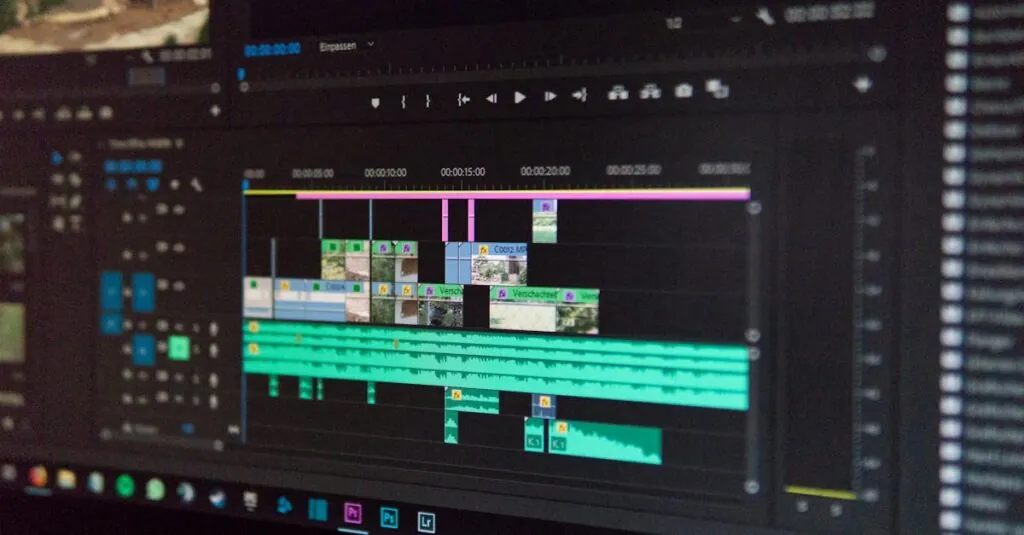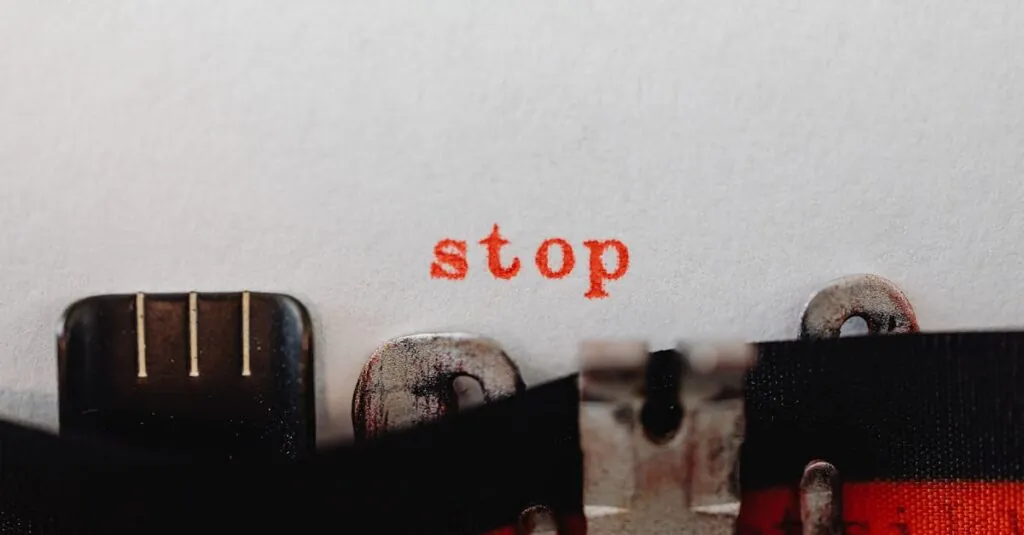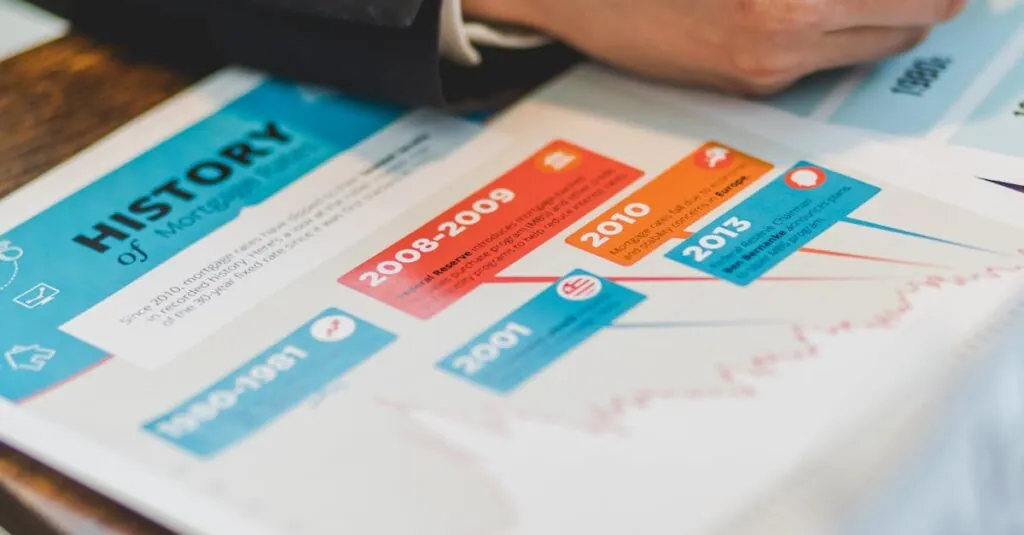Drowning in debt can feel like trying to swim with a backpack full of bricks. But what if there’s a way to lighten the load without breaking a sweat? Enter the “pay off smallest debt first” strategy—a clever approach that turns debt repayment into a game. By tackling the tiniest debts first, individuals can experience quick wins that boost motivation and confidence.
Understanding Debt Repayment Strategies
Debt repayment strategies significantly impact financial well-being. The “pay off smallest debt first” method, often called the snowball method, encourages individuals to focus on low-balance debts. Prioritizing smaller debts offers quick payouts, resulting in psychological boosts that fuel ongoing motivation.
Strategies for debt repayment can vary. Hefty debts might seem overwhelming, but starting with the smallest debts creates a sense of accomplishment. This accomplishment enhances confidence as individuals progress toward financial freedom. Once one small debt is cleared, focus shifts to the next smallest, maintaining that initial momentum.
Beyond this approach, other strategies exist. The “avalanche method” tackles debts with the highest interest rates first. Selecting the avalanche method may save more on interest payments over time. However, it may not provide the quick wins that the snowball method does.
Creating a budget aids in formulating a repayment plan. Individuals should list each debt, noting the balance and interest rate for clarity. By organizing debts, they can clearly outline which debts to tackle immediately, often beginning with the smallest ones. Effective budget management fosters accountability and keeps debtors motivated throughout their repayment journey.
Tracking progress remains essential. Witnessing debts shrink over time reinforces a commitment to the chosen strategy. Engaging in financial education further bolsters understanding of debt repayment methods, ensuring informed decisions for a stable financial future.
Benefits Of Paying Off Smallest Debt First
Prioritizing the repayment of smaller debts first provides significant benefits. The process fosters a structured approach to debt management while delivering quick wins that enhance motivation.
Psychological Advantages
Quickly eliminating smaller debts creates immediate feelings of accomplishment. Individuals experience heightened motivation that encourages continued commitment to the repayment plan. Celebrating each paid-off debt builds confidence, reinforcing positive financial behaviors. This momentum transforms daunting tasks into manageable actions, empowering debtors as they progress through their debt repayment journey. The psychological boost achieved from these quick victories reduces stress, enhancing overall mental well-being.
Financial Impact
Focusing on smaller debts often leads to faster repayment and less accumulated interest over time. Paying off these debts first can free up cash flow, allowing individuals to redirect their funds towards larger debts sooner. The snowball method, while prioritizing these smaller obligations, creates a domino effect where subsequent payments grow larger and more impactful. Increased cash flow from eliminated debts contributes to greater financial stability. This strategy emphasizes the importance of strategic budgeting, rewarding individuals with visible progress in their quest for financial freedom.
Steps To Implement The Strategy
Implementing the “pay off smallest debt first” strategy involves a few clear actions. Individuals can take these steps to efficiently manage their debts.
Listing Your Debts
Start by compiling a list of all debts. Include each debt’s balance and minimum monthly payment for clarity. Organize the list from the smallest balance to the largest. Highlighting the smallest debts makes it easier to target. This initial overview also fosters better decision-making regarding payments. Keeping track of due dates ensures timely payments, further avoiding penalties. Regularly updating the list reflects the progress made as debts are eliminated. Having a structured view enhances motivation during the repayment journey.
Choosing The Right Payment Method
Select a payment method that complements the listed debts. Consider using automatic payments to avoid missed deadlines. Allocate any extra funds specifically towards the smallest debt first. For example, whenever extra money is available, designate those funds to the target debt. This approach accelerates repayment and reinforces commitment to the strategy. Additionally, he or she can adjust monthly budgets to prioritize these payments. Clarity in the payment method maintains focus on the goal of achieving financial freedom.
Common Mistakes To Avoid
Individuals often encounter missteps while employing the “pay off smallest debt first” strategy. Recognizing these pitfalls plays a vital role in successfully managing debt.
Ignoring Larger Debts
Focusing solely on smaller debts can lead to neglecting larger financial obligations. Larger debts typically carry more significant interest, potentially increasing the total amount owed over time. Missing payments on these debts may result in higher penalties and further financial strain. Prioritizing larger debts alongside smaller ones ensures comprehensive debt management. Balancing the snowball method with awareness of larger debts permits individuals to avoid accumulating unnecessary interest, ultimately promoting financial stability.
Not Tracking Progress
Tracking repayment progress proves essential for maintaining motivation. Individuals who fail to monitor their debt reduction may experience dwindling commitment to the repayment plan. Regularly reviewing the decreasing balances of debts reinforces a sense of accomplishment. Setting measurable goals fosters accountability in the journey toward financial freedom. Many people find that visualizing their progress, such as through graphs or charts, enhances motivation. Implementing effective tracking methods allows individuals to stay focused, elevating their commitment to overcoming financial challenges.
Embracing the strategy of paying off the smallest debts first can transform the daunting task of debt repayment into a manageable journey. By achieving quick wins individuals not only reduce their financial burden but also cultivate a sense of accomplishment that fuels their motivation. This method encourages consistent progress and fosters a positive mindset.
As individuals tackle their debts one by one they pave the way toward greater financial stability. The psychological benefits gained from this approach can lead to more effective budgeting and proactive financial management. In the end prioritizing smaller debts lays the groundwork for a more secure financial future and empowers individuals to take control of their financial lives.













